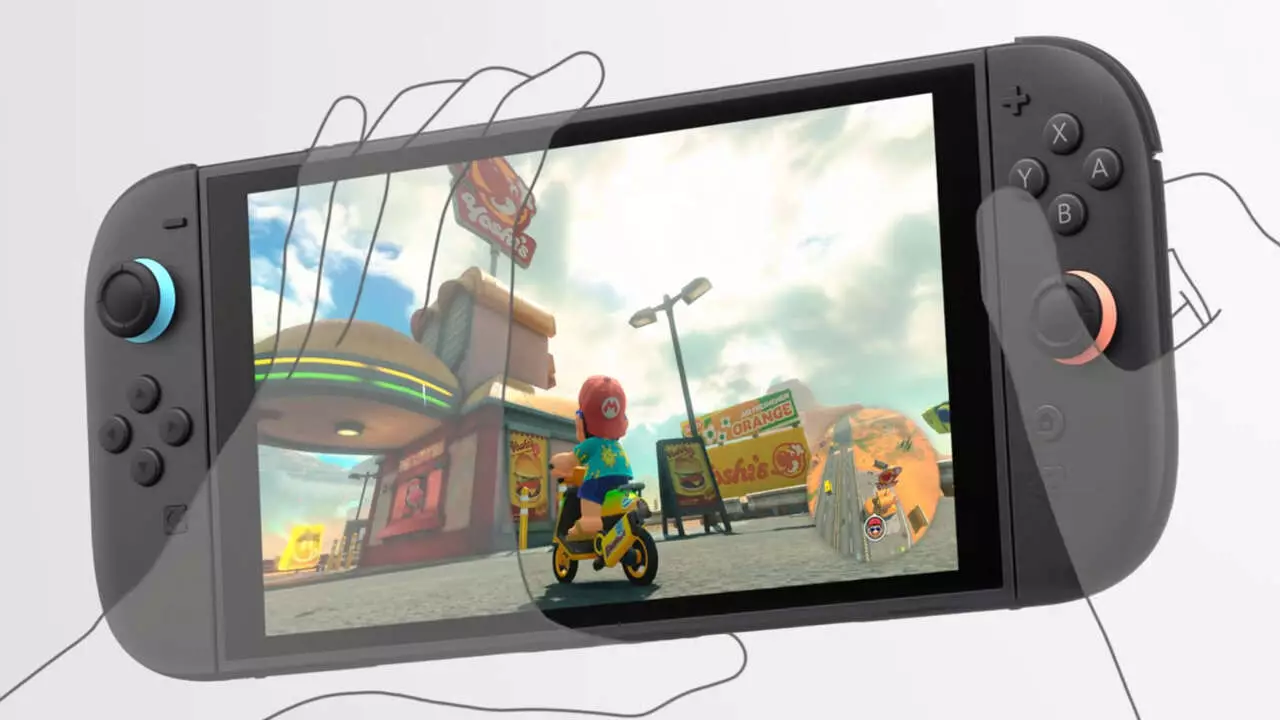The gaming industry is an arena drenched in innovation, iconic designs, and unforgettable experiences. Yet, within this vibrant landscape, few concepts have endured public scrutiny and anticipation quite like the Nintendo Switch. Originally released in 2017, the console introduced the revolutionary Joy-Con controllers, which have since become synonymous with the brand. However, a tantalizing idea that never fully materialized during the Switch’s initial development was the potential for magnetic attachment. This evolution of controller design and functionality reflects Nintendo’s unyielding commitment to enhancing user experience.
In a recent developer interview, insights from Nintendo’s Kouichi Kawamoto revealed that magnetic Joy-Cons had once been proposed and subsequently abandoned due to concerns about durability and stability. Concern over a weak magnetic connection that caused wobbling was enough to make the team reconsider the viability of such an attachment system. This caution is a clear indication of Nintendo’s philosophy—prioritizing customer confidence over experimental innovation. After all, an unstable controller could detract from gameplay and consumer trust. Yet, out of this perceived failure, a desire to explore magnetic technology persisted, showcasing the company’s iterative approach to product development.
The Persistent Pursuit of Magnets
Following the initial setback, the concept of magnetic Joy-Cons was not cast aside but rather stowed away for future consideration. Such resilience in innovative thinking speaks volumes about the company culture at Nintendo, where trial and error is often the bedrock of progress. The magnetic attachment, as described by Kawamoto, aimed to simplify the connection process in a way that would appeal to younger gamers as well. With this in mind, the team engaged in ongoing research to solve the challenges posed by magnets, proving that sometimes, the best ideas need time to flourish.
The clear shift from the original rail system to the magnetic design in the Switch 2 illustrates not only technological advancement but also a deeper understanding of user experience. With the introduction of Joy-Con 2 controllers that can be effortlessly attached and detached, developers have transformed what was once a shaky concept into a product that marries innovation with practicality. This new design is a testament to Nintendo’s commitment to making gaming accessible to all ages, enhancing the intuitiveness of the hardware.
A Suite of Innovations: Unveiling the Switch 2
The anticipation surrounding the Nintendo Switch 2 is not just about the controller evolution; it also encompasses a holistic enhancement of the gaming experience. The console promises not only to introduce magnetic Joy-Con 2 controllers but also 4K resolution capabilities, HDR support, and significantly faster frame rates in select titles, elevating the gaming experience to unprecedented levels. This multifaceted approach highlights Nintendo’s ambition to redefine the gaming console in an era saturated with increasingly sophisticated technology.
Moreover, features like the inclusion of a dedicated GameChat button and larger thumbsticks indicate a concerted effort towards fostering interaction and engagement in multiplayer scenarios. As gaming grows within the social sphere, these enhancements are not simply novelties; they are crucial for competitive and cooperative play alike. Furthermore, the promise of exclusive game titles, such as Mario Kart World and Kirby Air Ride, showcases a commitment to not only innovate hardware but also expand beloved franchises, ensuring that nostalgia and novelty coexist harmoniously.
The Nameless Architect: Satoru Iwata’s Legacy
Perhaps one of the most poignant aspects of this journey is the shadow of the late Satoru Iwata, whose influence continues to resonate within Nintendo’s philosophy. Iwata’s foresight in protecting the integrity of design choices has paved the way for a more refined approach to product innovation. His belief in a stable and user-friendly experience correlates directly with how the team approached the magnetic Joy-Con idea, rearing a gentle nod to his legacy at each milestone gained along the way.
The unveiling of the magnetic Joy-Con 2 represents more than just a fresh set of controllers for Nintendo—it’s a testimonial to the company’s growth, adaptability, and unwavering dedication to delivering memorable experiences. As excitement grows for the Switch 2’s imminent release, gamers can surely anticipate not only a nostalgic return to some beloved mechanics and titles but also an invitation to explore new dimensions of play that echo Iwata’s ideals. The future of gaming looks incredibly bright, and it seems effortless attachment may just be the beginning.

